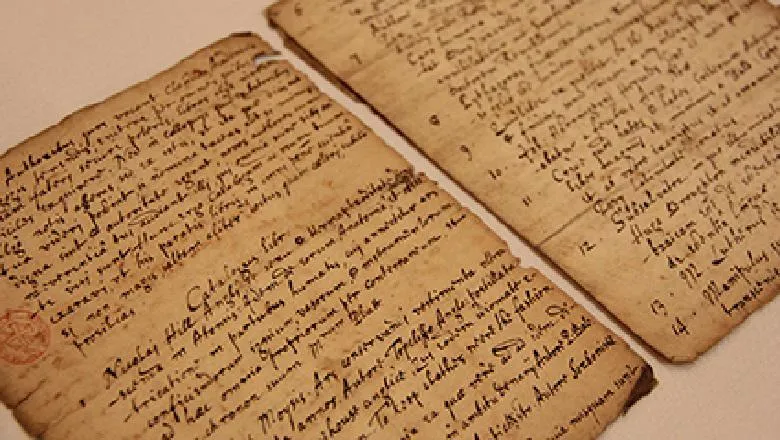06 November 2017
Analysing new John Donne manuscript
King’s academic analyses newly discovered John Donne manuscript

A handwritten manuscript of a satirical social commentary on Jacobean England by the young John Donne has been found buried amongst hundreds of fragments of documents in a tin trunk at Westminster Abbey.
An article about the find and analysing its significance is due for publication in the Review of English Studies, co-authored by Dr Daniel Starza Smith, Lecturer in Early Modern English Literature at King’s, and Matthew Payne, Keeper of the Muniments at Westminster Abbey, who discovered the manuscript.
The manuscript, thought to date from 1603-1604 and be written in the run up to the gunpowder plot, is a copy of Donne’s ‘The Courtier’s Library’, a satirical attack on corruptions in the church and establishment. The satire was circulated privately by Donne to friends and patrons in the early 1600s – its radical content too dangerous to print in the febrile atmosphere of James I’s court when anti-Catholic sentiment was rising, and about to explode in spectacular fashion with the intervention of Guy Fawkes.
Dr Daniel Starza Smith said: ‘This is an extremely exciting find, and gives us important new clues about the life and writing of one of our most important writers. We might think of “fake news” as a modern phenomenon, but Donne saw something similar happening around him.
‘He was horrified at the corruption of truth by the powerful, greedy, and wilfully ignorant, and he responded with this vicious satire, which was too dangerous to print until after his death. This discovery helps us understand how it circulated furtively among his trusted friends.’
The document was discovered when Matthew Payne was working through a trunk of unsorted fragments of early documents in the Abbey’s Library in autumn 2016. The only other known contemporary handwritten copy in existence is at Trinity College, Cambridge. The Abbey manuscript is not in Donne’s own hand, but is the earliest surviving text - one of the earliest literary works of the Jacobean reign.
Matthew Payne, Keeper of the Muniments, Westminster Abbey said: ‘It was clear almost immediately that this document was unlike the others which were in the trunk with it. Most of those are in small pieces and were leftover fragments of low-level administrative records of the late medieval and early modern period.
‘It is always exciting to find something new, and of course as soon as I worked out what it was, it was clear that it was a document of some importance. It is very gratifying to be able to set it in context, and to add to our knowledge of Donne and his activities at this time in his life. But a mystery remains: how did it come to find its way to Westminster Abbey?’
The manuscript will go on free public display in St Margaret’s Church, next to Westminster Abbey from Monday 13th November for one week.

